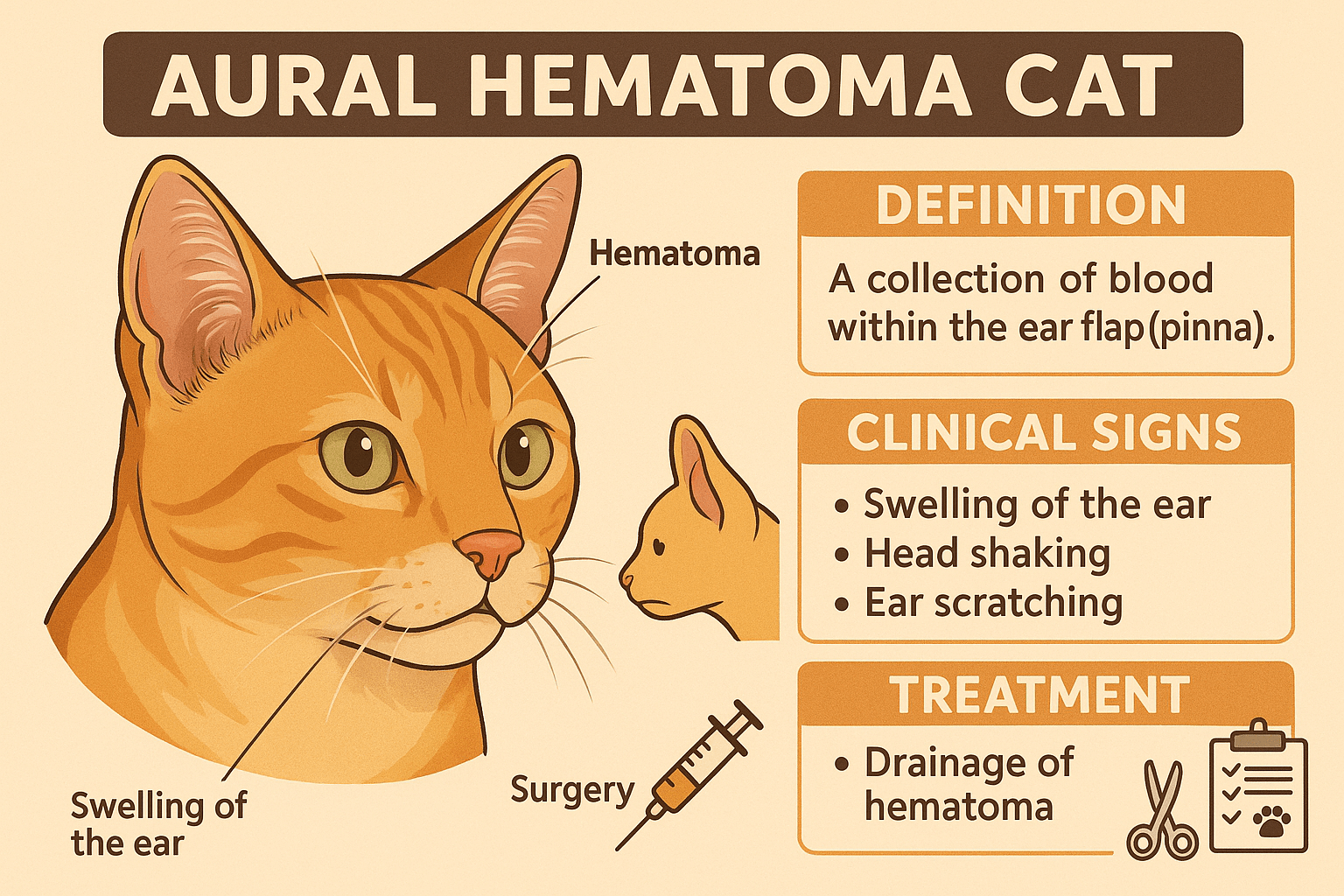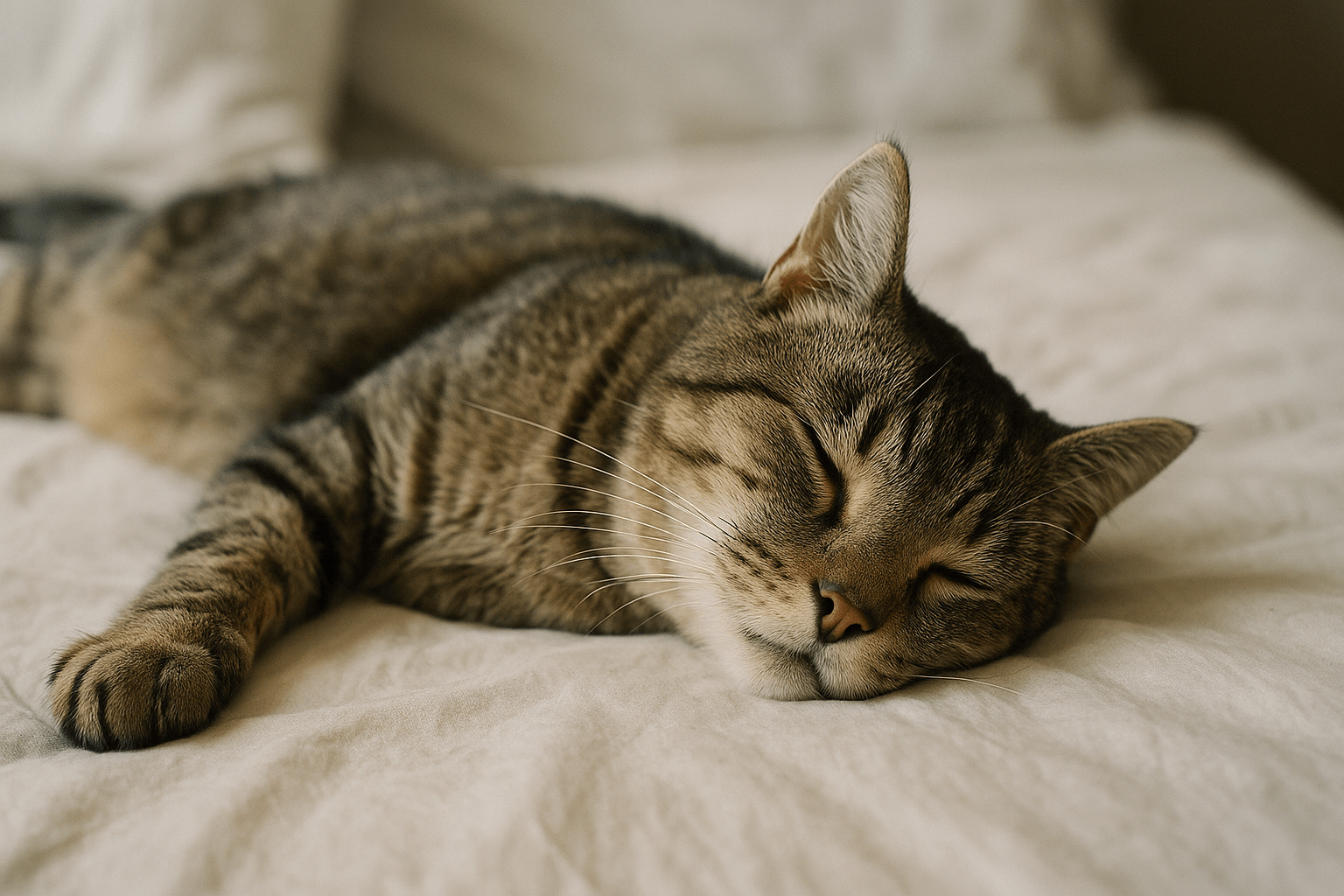Understanding Aural Hematoma in Cats
An aural hematoma, often referred to as a “cat ear hematoma,” is a condition that can cause discomfort and distress for your feline friend. It occurs when blood accumulates between the cartilage and skin of the ear, leading to swelling and pain. While this issue is more common in dogs, cats are not immune to it, especially those prone to ear infections or excessive scratching. Recognizing the signs early and seeking proper treatment is essential to prevent complications and ensure your cat’s well-being. In this blog post, we’ll explore what causes an aural hematoma, how it’s treated, and how you can help your cat recover comfortably.
Expert Insight on Aural Hematoma in Cats
“An aural (ear) hematoma refers to the collection of blood in the cat’s earflap or cartilage. It appears as a swelling that feels soft and hot. The primary cause of aural hematoma is a self-induced injury due to continuous scratching or shaking of the head.”
What Causes an Aural Hematoma in Cats?
Understanding the root causes of an aural hematoma is key to preventing and addressing this painful condition. Here are some common factors that contribute to its development.
Ear Infections:
Bacterial or yeast infections can irritate the ear, causing your cat to scratch excessively and damage the delicate tissues.Ear Mites:
These tiny parasites are a frequent culprit behind intense itching, which can lead to trauma and blood vessel rupture in the ear.Trauma or Injury:
A sudden injury, such as a fall or being hit, can damage the blood vessels in the ear and result in a hematoma.Allergies:
Allergic reactions to food, pollen, or other irritants can cause inflammation and itching, prompting aggressive scratching.Aggressive Head Shaking:
Cats with underlying conditions like ear pain may shake their heads vigorously, increasing the risk of blood vessel rupture.
By identifying these triggers, you can take steps to minimize your cat’s risk of developing an aural hematoma.

Symptoms of an Aural Hematoma in Cats
Recognizing the symptoms of an aural hematoma early can make a significant difference in your cat’s recovery. Look out for these telltale signs that something may be wrong.
Swollen Ear Flap:
The most obvious symptom is a swollen, puffy ear flap that feels squishy or firm to the touch.Head Tilting or Shaking:
Cats with hematomas often tilt their heads or shake them repeatedly due to discomfort or pain.Excessive Scratching:
Persistent scratching at the affected ear is a sign that your cat is trying to relieve irritation or pain.Redness or Discharge:
The ear may appear red, inflamed, or have discharge, indicating an infection or other underlying issue.Behavioral Changes:
Your cat may become lethargic, irritable, or avoid contact if they’re experiencing pain from the hematoma.
If you notice any of these symptoms, it’s important to consult your veterinarian promptly for a proper diagnosis and treatment plan.
Check this guide 👉Scabs on Cats Ears: Best 7 Expert Tips!
Check this guide 👉Understanding Cat Ear Cancer: Best 7 Expert Tips!
Check this guide 👉Understanding Cat Ear Yeast Infections: Best 7 Health Tips!
Signs of an Aural Hematoma | Possible Underlying Causes |
|---|---|
Swollen ear flap | Ear infections or mites |
Head tilting or shaking | Trauma or injury to the ear |
Excessive scratching | Allergies or skin irritation |
Redness or discharge | Bacterial or yeast infections |
Behavioral changes | Pain or discomfort from the hematoma |
Treatment Options for Aural Hematoma in Cats
Treating an aural hematoma in cats typically involves addressing both the hematoma itself and any underlying conditions contributing to the problem. Here are the most common treatment approaches.
Drainage and Compression Bandaging:
A veterinarian may drain the blood from the hematoma and apply a compression bandage to prevent refilling.Surgical Intervention:
For severe cases, surgery is often required to remove the accumulated blood and suture the ear to promote healing.Medication:
Anti-inflammatory drugs or antibiotics may be prescribed to reduce swelling and treat infections.Treating Underlying Issues:
Addressing ear mites, infections, or allergies is crucial to prevent recurrence after the hematoma heals.Post-Treatment Care:
Follow-up visits and careful monitoring ensure the hematoma doesn’t return and your cat recovers fully.
Proper treatment not only alleviates your cat’s discomfort but also prevents long-term damage to the ear.
Preventing Aural Hematoma in Cats
While not all cases of aural hematoma can be prevented, taking proactive measures can significantly reduce your cat’s risk. Here are some practical tips to keep their ears healthy.
Regular Ear Cleaning:
Gently clean your cat’s ears with a vet-recommended solution to remove dirt and prevent infections.Check for Parasites:
Regularly inspect your cat’s ears for signs of mites or other parasites and treat them promptly if detected.Monitor for Allergies:
Be mindful of potential allergens in your cat’s environment or diet and consult your vet if you suspect allergies.Provide a Safe Environment:
Minimize the risk of injury by keeping your cat indoors and ensuring their surroundings are hazard-free.Schedule Routine Vet Visits:
Regular check-ups allow your vet to catch and address minor issues before they escalate into serious problems.
By incorporating these preventive measures, you can help safeguard your cat’s ear health and overall well-being.
Common Mistakes to Avoid
Managing an aural hematoma requires care and precision. Avoiding these common mistakes ensures your cat’s recovery process goes smoothly.
Delaying Veterinary Care:
Waiting too long to seek treatment can worsen the condition and increase the risk of complications.Attempting DIY Drainage:
Trying to drain the hematoma at home can lead to infection or further injury. Always leave this task to professionals.Ignoring Underlying Issues:
Failing to address ear mites, infections, or allergies allows the problem to recur even after treatment.Skipping Post-Treatment Follow-Ups:
Missing follow-up appointments may result in undetected issues or incomplete healing.Using Over-the-Counter Medications:
Administering medications without veterinary approval can harm your cat or interfere with treatment.
Avoiding these pitfalls ensures your cat receives the best possible care during their recovery journey.
How to Comfort Your Cat During Recovery
Recovering from an aural hematoma can be uncomfortable for your cat. These tips will help you provide comfort and support during their healing process.
Create a Quiet Space:
Set up a calm, quiet area where your cat can rest without disturbances.Use a Protective Collar:
An Elizabethan collar prevents your cat from scratching or biting the affected ear, reducing the risk of further injury.Offer Soft Bedding:
Provide plush bedding to cushion your cat’s head and minimize pressure on the injured ear.Limit Physical Activity:
Restrict jumping or vigorous play to prevent strain on the ear and promote faster healing.Reward Good Behavior:
Use treats and praise to reinforce calm behavior and encourage cooperation during recovery.
With patience and care, you can make the recovery process as stress-free as possible for your feline friend.
When to Seek Immediate Veterinary Attention
While some ear issues can wait, others require urgent care. Knowing when to seek immediate veterinary attention can save your cat from unnecessary suffering.
Severe Swelling or Bleeding:
If the hematoma is rapidly growing or bleeding, contact your vet right away to prevent complications.Signs of Extreme Pain:
Vocalizations, hiding, or aggression may indicate your cat is in significant pain and needs immediate relief.Fever or Lethargy:
These symptoms could signal a systemic infection requiring urgent treatment.Loss of Balance or Coordination:
If your cat appears disoriented or struggles to walk, it may indicate inner ear involvement.Refusal to Eat or Drink:
A lack of appetite or dehydration suggests your cat is feeling unwell and needs professional care.
Acting quickly in these situations ensures your cat receives timely intervention and minimizes the risk of long-term damage.
Frequently Asked Questions About Aural Hematoma in Cats
How long does it take for an aural hematoma to heal?
Healing time varies depending on the treatment method, but it typically takes 2-4 weeks with proper care.
Can an aural hematoma go away on its own?
Without treatment, the hematoma may resolve but can leave permanent scarring or deformities in the ear.
Is surgery always necessary for aural hematomas?
Surgery is recommended for severe cases, but mild hematomas may respond to drainage and medication.
What should I do if my cat has an ear infection?
Consult your vet immediately to prevent complications like aural hematomas or worsening infections.
Are certain cat breeds more prone to aural hematomas?
Cats with floppy ears or those predisposed to ear infections may be at higher risk for developing hematomas.
Ensuring Your Cat’s Comfort and Recovery
An aural hematoma in cats can be a painful and stressful experience, but with prompt attention and proper care, your feline companion can recover fully. Understanding the causes, symptoms, and treatment options empowers you to act swiftly when needed. By prioritizing preventive measures and maintaining open communication with your veterinarian, you can protect your cat’s ear health and ensure they live a happy, comfortable life. Remember, your vigilance and care make all the difference in keeping your furry friend healthy and thriving.
Why Is My Cats Second Eyelid Showing? Best 7 Expert Tips! Understand causes, health signs, and how to respond when your cat’s third eyelid becomes visible.
How Do I Know If My Cat Died Peacefully? Best 7 Expert Tips! Discover the quiet signs of a peaceful feline passing and find comfort in their final moments.
Cat Allergy Eyes: Best 7 Expert Tips! Discover why your eyes react to cats and learn proven strategies for relief—without giving up your feline friend.
Why Do Abyssinian Cat Colors Matter? Best 7 Expert Tips! Discover the genetics, rare hues, and care secrets behind Abyssinian coat colors for a healthier, happier cat.





